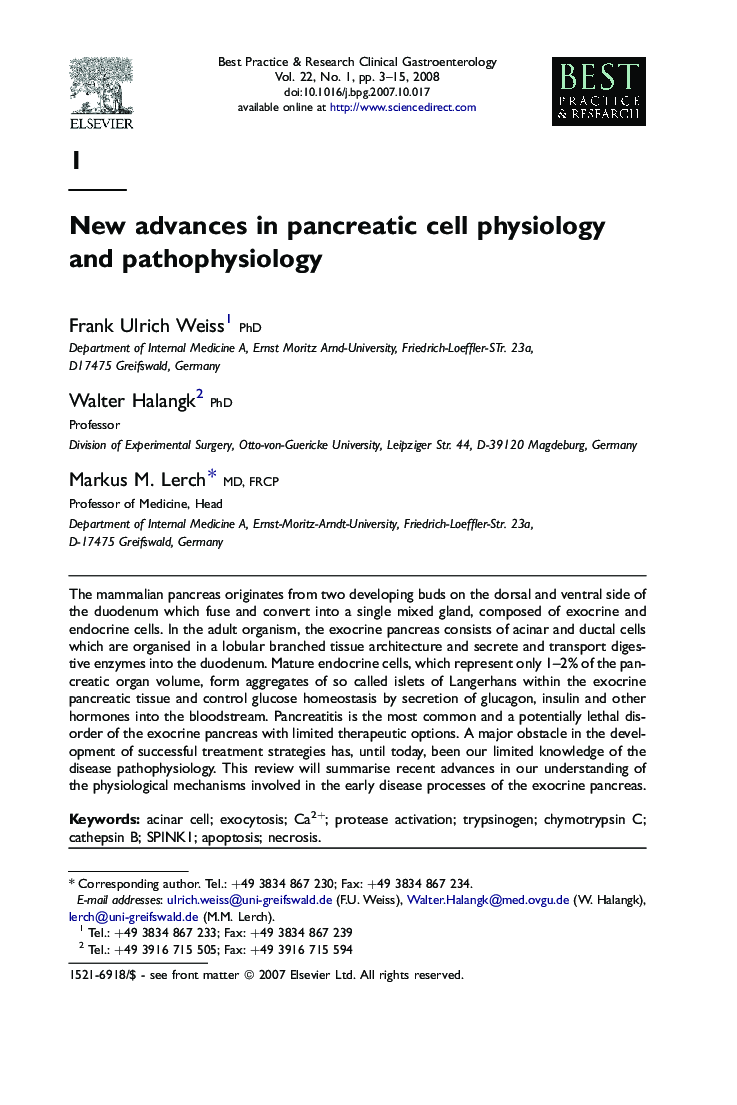| Article ID | Journal | Published Year | Pages | File Type |
|---|---|---|---|---|
| 3254519 | Best Practice & Research Clinical Gastroenterology | 2008 | 13 Pages |
The mammalian pancreas originates from two developing buds on the dorsal and ventral side of the duodenum which fuse and convert into a single mixed gland, composed of exocrine and endocrine cells. In the adult organism, the exocrine pancreas consists of acinar and ductal cells which are organised in a lobular branched tissue architecture and secrete and transport digestive enzymes into the duodenum. Mature endocrine cells, which represent only 1–2% of the pancreatic organ volume, form aggregates of so called islets of Langerhans within the exocrine pancreatic tissue and control glucose homeostasis by secretion of glucagon, insulin and other hormones into the bloodstream. Pancreatitis is the most common and a potentially lethal disorder of the exocrine pancreas with limited therapeutic options. A major obstacle in the development of successful treatment strategies has, until today, been our limited knowledge of the disease pathophysiology. This review will summarise recent advances in our understanding of the physiological mechanisms involved in the early disease processes of the exocrine pancreas.
